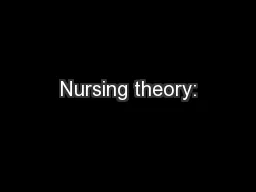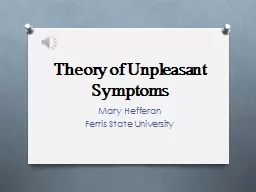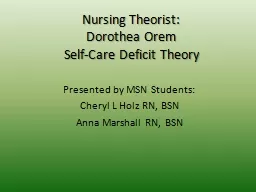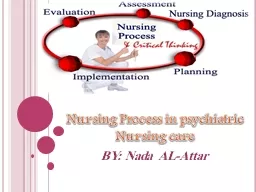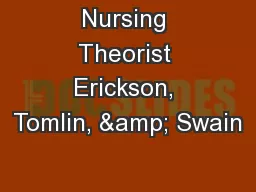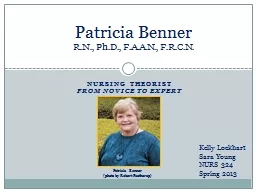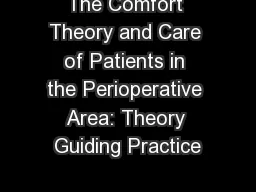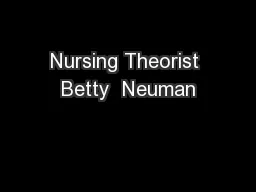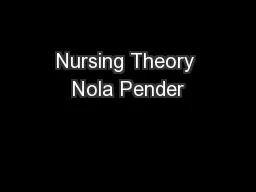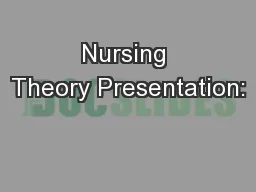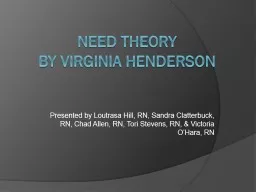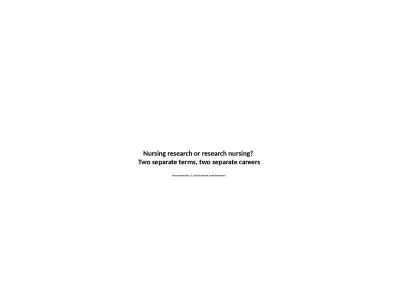PPT-Nursing theory:
Author : test | Published Date : 2016-07-27
An Exploration of Jean Watsons Philosophy amp Science of Caring Ferris State University NURS 324 Amy Johns Brandi Miller Patricia Moon Photo Institute of
Presentation Embed Code
Download Presentation
Download Presentation The PPT/PDF document "Nursing theory:" is the property of its rightful owner. Permission is granted to download and print the materials on this website for personal, non-commercial use only, and to display it on your personal computer provided you do not modify the materials and that you retain all copyright notices contained in the materials. By downloading content from our website, you accept the terms of this agreement.
Nursing theory:: Transcript
Download Rules Of Document
"Nursing theory:"The content belongs to its owner. You may download and print it for personal use, without modification, and keep all copyright notices. By downloading, you agree to these terms.
Related Documents

